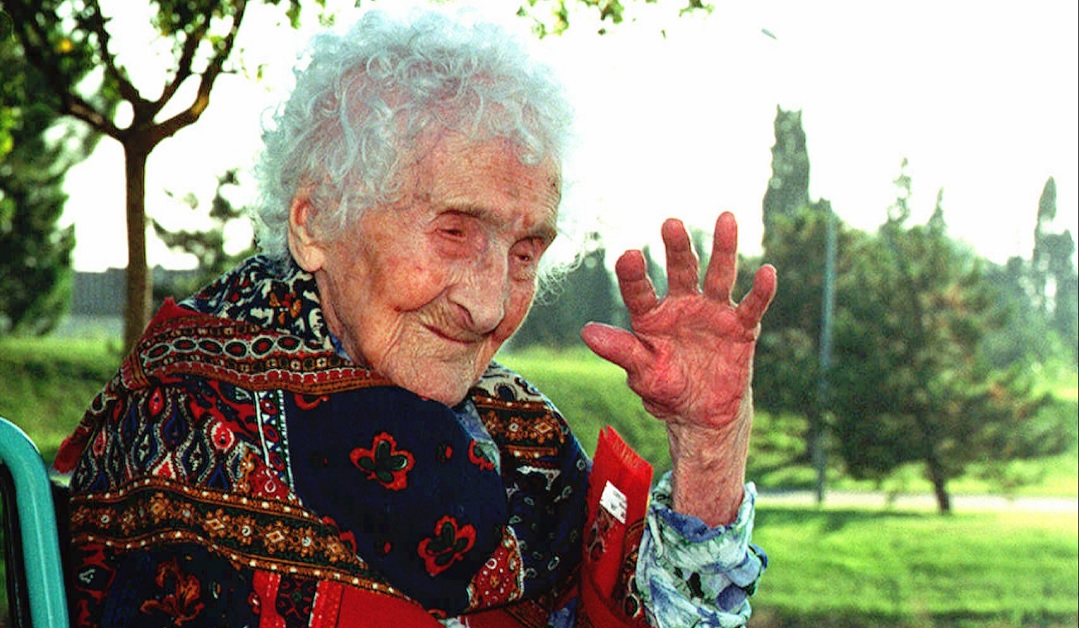Under Age
| December 2, 2020Was the charismatic, elderly Frenchwoman a supercentenarian or merely a super-fraudster?

Image: APImages.com
I
n the summer of 1997, Jeanne Calment became a celebrity. That was the day of her death, and the day she passed all the world records for longevity. For 122 year, five months, and 14 days, Jeanne Calment managed to evade the malach hamaves.
In the 23 years since her passing, and during the last decades of her life, researchers have been intrigued about uncovering the secret to her exceedingly long life. Calment was born on February 21, 1875, to prominent residents of the town of Arles Bouches-du-Rhône, Provence. Her father, Nicholas, was a well-to-do shipbuilder, and her mother, Mary, came from a family of millers.
Jeanne lived a graced childhood, according to her biographer, Georges Garoyan, and a team of researchers who interviewed Calment extensively in her later years. Every morning after a cup of hot chocolate, she would head off to school accompanied by the family maid. When the morning session was over, her father would bring her home for lunch, share a companionable meal, and return her to school in time for the afternoon sessions.
Despite her upbringing in a society where little girls were expected to be demure and beribboned, Calment loved the outdoors, and spent a lot of time on her father’s farms in Saint Martin de Crau and Paradou. At 11, like other French mademoiselles her age, Calment progressed to college (high school), graduating at 16. After her graduation, as going to work didn’t enter the equation, she spent her time painting and playing piano.
When she was 21, Calment married Fernand Nicolas Calment, her second cousin twice-over. Their paternal grandfathers were brothers, and their paternal grandmothers were sisters. After her marriage, she transitioned from a life of ease at her parents’ home to a life of ease with her husband. Fernand was the heir to a prosperous drapery business, “Nouveautés,” located in the center of Arles, and the couple moved into a spacious apartment built above it. Jeanne employed servants to run her home, while she proceeded to lead a strenuous, outdoorsy lifestyle. She indulged in fencing, cycling, tennis, swimming and even roller-skating, even though, as she later recalled, “I fell flat on my face.” She also played piano and held music-making sessions with her friends.
In the summer, the couple would go glacier mountaineering, and hunting in the hills of Provence. As her proficiency with the rifle improved, Calment found that she enjoyed hunting tremendously, and soon joined an all-male hunting society. After a while, she would lead the men on their hunting expeditions. They playfully called her “Jean” — the masculine version of her name — or “Mme. Partridge.”
Their only daughter, Yvonne Marie Nicolle, was born in 1898. When Yvonne was 28, she married Joseph Billot, an army officer. She gave birth to their only son, Frédéric, later that year.
But on the day that Jeanne should have been stringing streamers for Yvonne’s 36th birthday in 1934, she found herself instead accompanying her daughter on her final journey. After a stretch of tuberculosis that had been treated at various sanatoriums, Yvonne passed away from pleurisy, a respiratory complication of the disease. The grieving grandmother raised young Frédéric, who lived with his father in a neighboring apartment.
The storms of World War II seem to have bypassed the wealthy matron with nary a ruffle. She later claimed that German soldiers had slept in her rooms but that she wasn’t angry with them, as they had not stolen anything.
In 1942, her husband, Fernand, passed away at age 73, apparently after eating a quantity of chemically-tainted cherries. While her grandson, Frédéric, eventually married and moved next door, by 1963 all her relatives had passed away — her brother François died in 1962 at the age of 97, her son-in-law, Joseph, died in January 1963, and her grandson died in a car accident a few months after that.
In 1965, 90 years old with no heirs left, Calment put up her apartment for “en viager” sale — a life estate contract selling the property in exchange for a right of occupancy and a monthly revenue. She signed the deal with her attorney, notary public André-François Raffray, for 2,500 francs (€380) a month, until her death. Raffray probably assumed his client would die within five years maximum, but 30 years later, in 1995 when he died, he’d already paid her more than double what the apartment was worth — and his family had to continue making payments until her death two years later. When her interviewers asked about the arrangement that netted her a surprise fortune, she reportedly commented, “In life, one sometimes makes bad deals.”
Oops! We could not locate your form.













